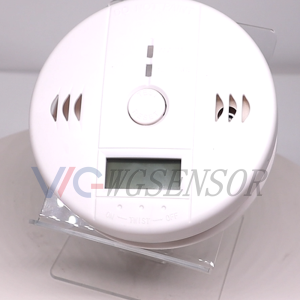Carbon monoxide (CO) detectors play a crucial role in safeguarding human health by alerting individuals to the presence of this colorless and odorless gas. The detectors operate based on a simple yet effective principle. Here’s an overview of how carbon monoxide detectors work:
1. Detection Method:
Carbon monoxide detectors typically employ electrochemical sensors to detect the presence of CO gas. These sensors consist of electrodes immersed in a chemical solution. When CO comes into contact with the sensor, a chemical reaction occurs, leading to a change in the electrical current flowing through the electrodes.
2. Electrochemical Reaction:
The electrochemical reaction at the heart of the sensor involves the oxidation of CO at one of the electrodes. This reaction produces a measurable electric current that is proportional to the concentration of CO in the air. The greater the concentration of CO, the higher the electric current generated.
3. Alarm Activation:
The carbon monoxide detector is programmed with a predefined threshold level for CO concentration. If the electric current surpasses this threshold, indicating a dangerous level of carbon monoxide, the alarm is triggered. The alarm is usually an audible alert, such as a loud sound or a series of beeps, to notify occupants of the potential threat.
4. Power Source:
Carbon monoxide detectors are commonly powered by batteries or can be hardwired into the electrical system of a building. Battery-powered detectors are crucial for maintaining functionality during power outages, ensuring continuous protection.
5. Regular Testing and Maintenance:
To ensure the reliability of the carbon monoxide detector, regular testing and maintenance are essential. Users are advised to test the alarm function periodically, replace batteries as needed, and follow the manufacturer’s recommendations for device maintenance.
6. Advanced Features:
Some modern carbon monoxide detectors come equipped with advanced features, such as digital displays showing real-time CO levels, peak level memory, and the ability to distinguish between low and high concentrations of CO.
In summary, carbon monoxide detectors operate by utilizing electrochemical sensors that detect the presence of CO gas through a chemical reaction, triggering an alarm when the concentration exceeds a predetermined threshold. Regular testing and maintenance are crucial to ensuring the continued effectiveness of these life-saving devices.


Please contact us for free quotation by form below. We promise the quickest response within 24 hours: